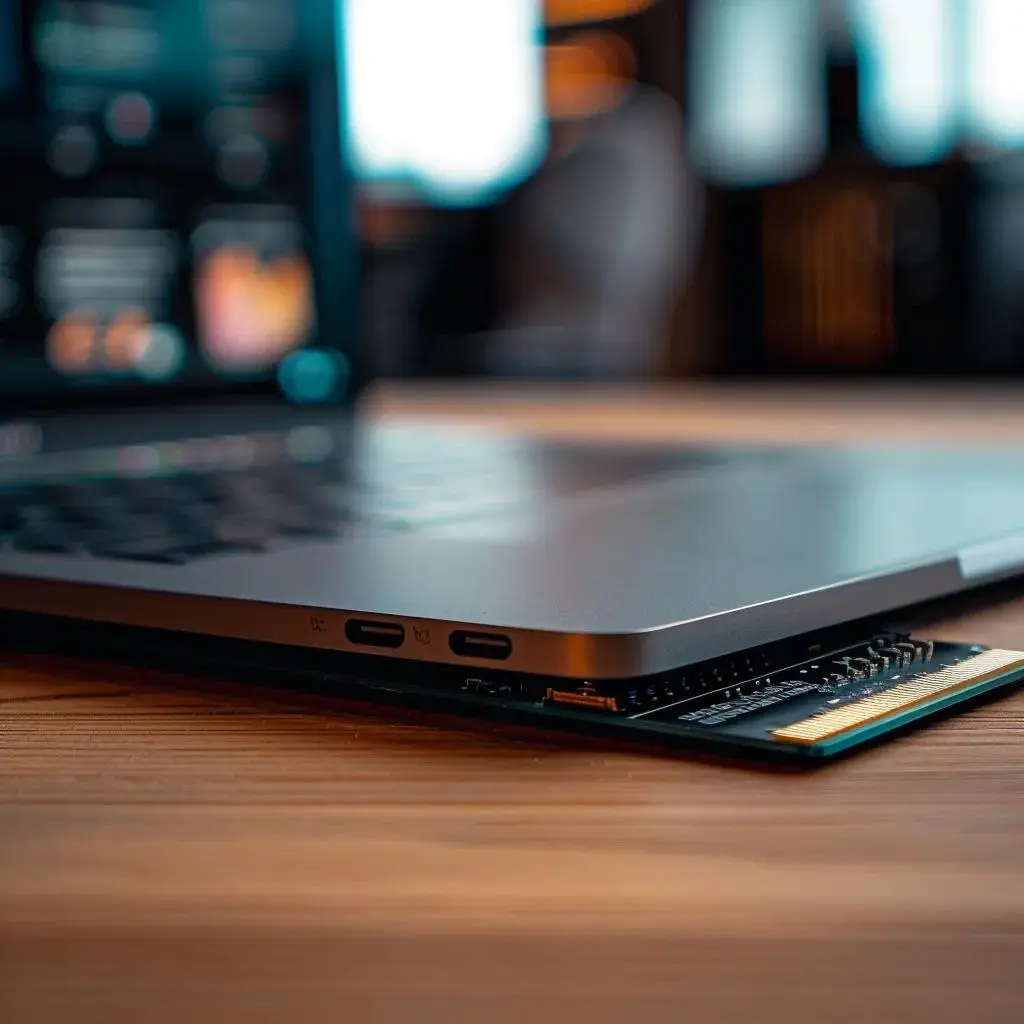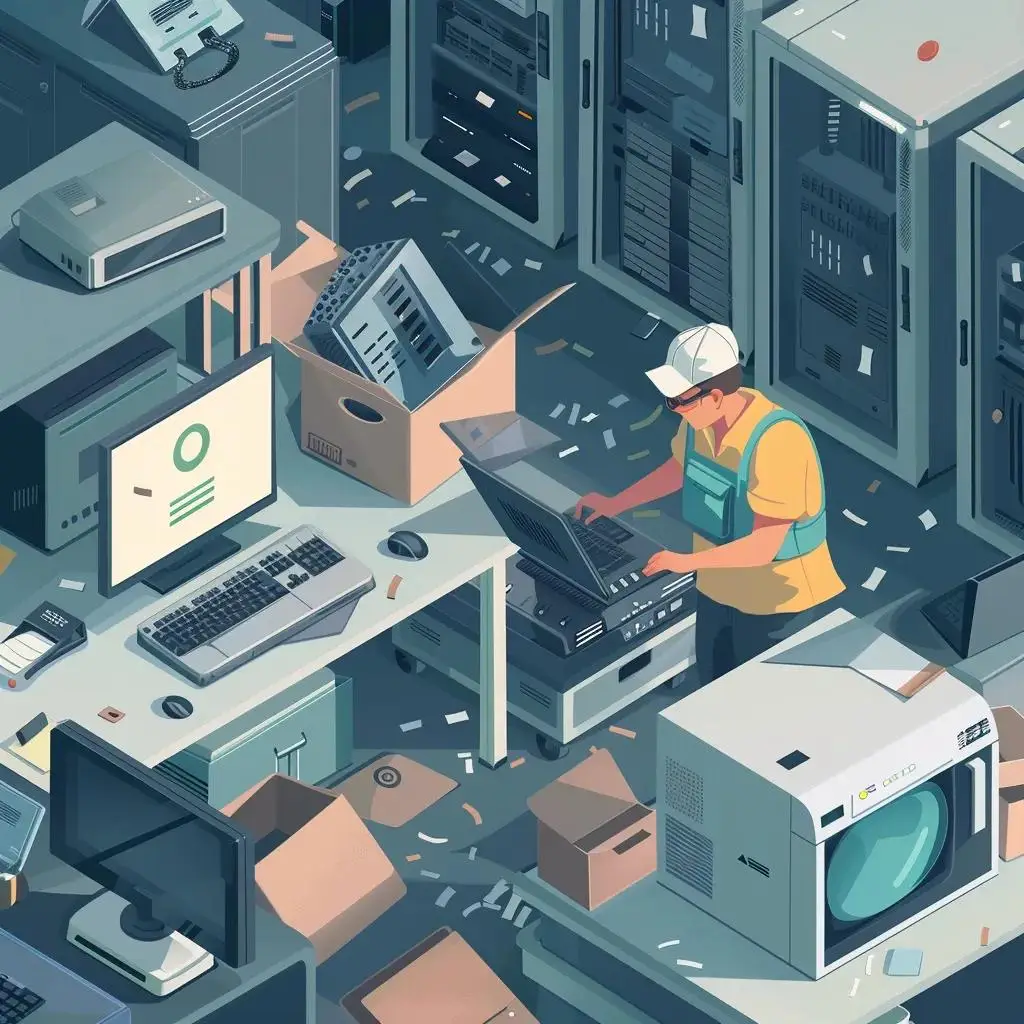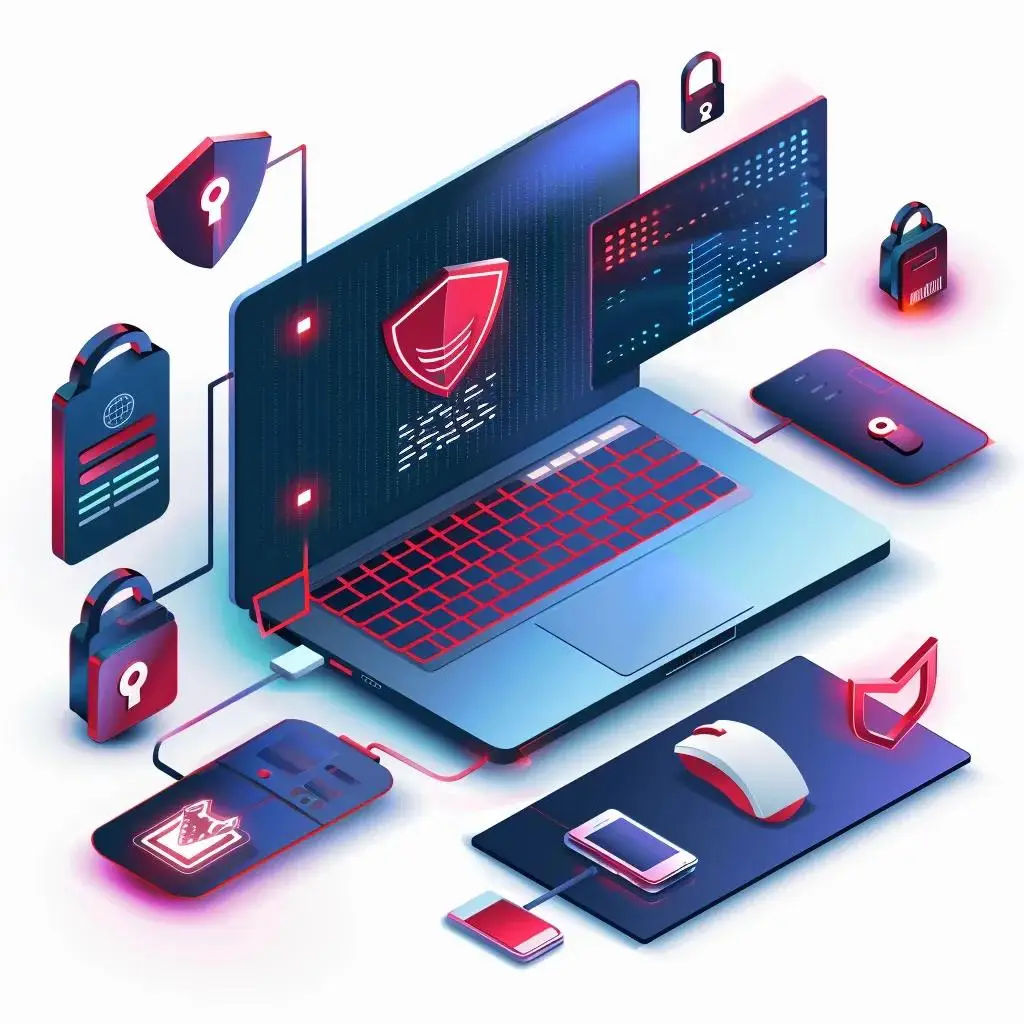Is It Time to Replace Your Hardware? A Strategic Guide for Small and Medium Businesses

Outdated computer hardware can become the hidden bottleneck in your operations, slowing workflows, exposing security gaps, and inflating long-term costs. In this guide, you will learn the key signs that your IT assets need replacement, the tangible benefits of an upgrade, optimal refresh cycles for desktops, laptops, servers and network devices, step-by-step planning strategies, secure disposal practices, ROI and TCO calculations, and the risks of delaying a refresh. Along the way, discover how Clear Sailing IT Solutions provides proactive managed IT services and lifecycle management to help SMBs stay efficient, secure, and cost-effective.
What Are the Key Signs Your Business Hardware Is Outdated?
Outdated hardware describes computer and server assets that no longer support current applications, security updates, or performance requirements, causing slow response times, software failures, and operational risk. Recognizing these signals allows you to address productivity and security before they escalate.
The most common indicators include:
- Slow Performance: Business computers struggle with routine tasks, extending project timelines and frustrating users.
- Software Incompatibility: Critical applications refuse to install or crash frequently on legacy operating systems.
- Frequent Crashes and Failures: Hardware faults lead to unplanned downtime, data corruption, and lost work hours.
- Security Vulnerabilities: Unsupported firmware and missing updates expose sensitive data to cyber threats.
Spotting these warning signs illuminates why a proactive hardware refresh is essential and sets the stage for understanding upgrade benefits.
How Does Slow Performance Indicate Hardware Replacement Needs?
Slow performance occurs when aging processors, limited memory, or antiquated storage in business computers degrade response times, reducing employee efficiency and increasing support tickets. Upgrading to multi-core CPUs, solid-state drives, and expanded RAM directly improves task throughput. Addressing sluggish systems naturally leads us to examine software compatibility challenges.
What Software Incompatibility Issues Signal Hardware Aging?
Software incompatibility arises when outdated operating systems or drivers cannot support modern business applications, leading to install failures, feature limitations, or security patch restrictions. For example, accounting or CRM software may refuse to launch on a 7-year-old machine. Beyond incompatibility, frequent system crashes pose another critical red flag for upgrade.
How Do Frequent Crashes and Failures Affect Business Operations?
Frequent crashes and hardware failures interrupt workflows, cause unsaved data loss, and require costly emergency repairs. Common causes include failing hard drives, overheating components, and firmware bugs. These interruptions not only hamper productivity but also open the door to security vulnerabilities if left unaddressed.
Why Are Security Vulnerabilities a Sign to Upgrade Hardware?
Security vulnerabilities emerge when firmware and hardware no longer receive vendor patches, leaving network devices and servers exposed to malware and unauthorized access. Outdated asset software often lacks modern encryption and authentication features. Understanding these vulnerability risks underscores why upgrading hardware assets is essential for protecting business data, which lays the foundation for exploring the benefits of new IT infrastructure.
Security Vulnerabilities and Hardware Updates
Outdated hardware that no longer receives vendor patches leaves network devices and servers exposed to malware and unauthorized access. Modern hardware offers advanced encryption engines and secure boot mechanisms to protect sensitive data.
This citation reinforces the article’s emphasis on the importance of hardware upgrades for maintaining data security and mitigating cyber threats.
What Are the Benefits of Upgrading Your Business IT Hardware?

Upgrading business IT hardware enhances processing power, security features, and network throughput, which collectively boost productivity and reduce operational risk. The following comparison illustrates how modern hardware outperforms legacy assets across critical dimensions:
| Hardware Asset | Attribute | Legacy State | Modern State |
|---|---|---|---|
| Desktop & Laptop | Speed | Dual-core CPU, 4 GB RAM | Quad-core CPU, 16 GB RAM |
| Storage | Reliability | HDD, 3–5 year warranty | SSD/NVMe, 5–7 year warranty |
| Security Features | Patch Support | Discontinued updates after 3 years | Ongoing firmware and driver updates |
| Network Interface | Throughput | Gigabit Ethernet | 2.5 GbE or 10 GbE adapters |
| Energy Efficiency | Power Usage | 60–100 W per unit | 30–50 W per unit |
Investing in upgraded computer and server hardware yields measurable gains across performance, reliability, security, and energy consumption. With these advantages in mind, small businesses can determine optimal replacement cycles.
How Does New Hardware Improve Productivity and Efficiency?
New hardware improves productivity by accelerating application launch times, multitasking capabilities, and data processing. Faster CPUs and solid-state storage reduce wait times for file transfers and software rendering, enabling teams to complete tasks more quickly. Enhanced efficiency also depends on stronger security, which we examine next.
In What Ways Does Upgraded Hardware Enhance Data Security?
Upgraded hardware embeds advanced encryption engines, secure boot mechanisms, and firmware monitoring to protect sensitive data at rest and in transit. Modern servers support hardware-based key management and trusted platform modules (TPMs), mitigating ransomware and breach risks. Improved security positions your business to scale without exposing data, which brings us to scalability benefits.
How Can Hardware Refresh Support Business Scalability?
A strategic hardware refresh plan equips your infrastructure to handle growing workloads, new service rollouts, and remote-work demands. Scalable servers, virtualization-ready processors, and modular storage arrays allow you to add capacity without forklift upgrades. Finally, analyzing hardware replacement from a financial perspective reveals long-term cost savings that justify the investment.
What Long-Term Cost Savings Result from Hardware Replacement?
Hardware replacement reduces ongoing maintenance and energy expenses, lowers support contracts, and minimizes emergency repair fees. Extended warranties and bundled service agreements further contain costs. Understanding these savings helps SMB decision-makers plan budget cycles and replacement strategies effectively.
How Often Should Small Businesses Replace Their Computers and Servers?
Most SMBs should plan to replace business desktops and laptops every three to five years and servers or network devices every three to seven years to balance performance, security, and depreciation schedules. Understanding these benchmarks allows businesses to align replacement timing with financial and operational goals.
Hardware Lifespan and Replacement Cycles
The lifespan of business desktops and laptops typically ranges from three to five years, while servers and network devices often require replacement every three to seven years. This is influenced by factors such as usage intensity, maintenance practices, and the demands of software applications.
This research supports the article’s recommendations for hardware refresh cycles, providing a benchmark for SMBs to align with their financial and operational goals.
What Is the Typical Lifespan of Business Desktops and Laptops?
The typical lifespan of business desktops and laptops ranges from three to five years, depending on usage intensity, maintenance practices, and software demands. After five years, hardware often drops below recommended specifications for productivity software. Server equipment often follows a longer lifecycle but also requires careful timing.
When Should Servers and Network Devices Be Replaced?
Servers and network devices generally require replacement every three to seven years based on workload growth, warranty coverage, and performance degradation. High-availability systems with redundant components may extend toward seven years, but firmware obsolescence often dictates an earlier refresh. Beyond hardware age, financial depreciation influences replacement timing.
How Does Hardware Depreciation Influence Replacement Timing?
Hardware depreciation measures the declining asset value over time, influencing tax deductions and budget planning. Aligning refresh cycles with depreciation schedules optimizes total cost of ownership and cash flow. Timing replacements with depreciation schedules helps optimize total cost of ownership, a topic we will explore in our ROI analysis.
How to Develop a Strategic Hardware Refresh Plan for Your Business?
A strategic hardware refresh plan combines thorough assessment, budgeting, procurement, deployment, and disposal to minimize downtime, control costs, and maintain security. The following high-level steps outline a structured approach:
- Assess current IT hardware to inventory assets, measure performance, and identify end-of-life risks.
- Plan and budget by forecasting replacement costs, estimating ROI, and securing funding.
- Engage managed IT services for vendor selection, procurement, installation, and ongoing lifecycle support.
- Schedule deployment with phased rollouts, backups, and staff communication to minimize operational impact.
- Dispose of decommissioned assets securely, following data destruction and environmental compliance standards.
Following these stages ensures a seamless hardware refresh process and positions your organization to leverage professional support at each phase.
What Are the Steps in Assessing Your Current IT Hardware?
Start by creating a comprehensive inventory that records processor speed, memory capacity, storage type, warranty status, and software compatibility for each computer asset. Use performance benchmarks to compare against manufacturer specifications. After assessment, the next critical phase is planning and budgeting for procurement.
How to Plan and Budget for Hardware Procurement?
Planning and budgeting involve gathering quotes, comparing total cost of ownership, and projecting productivity gains. Include costs for shipping, installation, training, and disposal. Forecast ROI by quantifying efficiency improvements and risk mitigation benefits. Partnering with experienced managed IT services enhances procurements and future support.
What Is the Role of Managed IT Services in Hardware Refresh?
Managed IT services provide vendor relationships, volume pricing, warranty management, and installation expertise. A reliable partner like Clear Sailing IT Solutions coordinates vendor selection, handles logistics, and ensures proactive monitoring post-deployment. With a managed services partner engaged, scheduling deployment while minimizing downtime becomes simpler.
How to Schedule Deployment and Minimize Downtime?
Schedule hardware rollouts after business hours or in phased segments, maintain backups, and communicate timelines to employees. Test new assets in parallel to reduce cutover risk. By planning transitional procedures, you ensure continuity and a smooth transition. Securing responsible disposal of replaced assets with secure data destruction practices is the final essential step.
Hardware Refresh Strategies for Efficient, Secure SMB IT Operations

Secure IT asset disposal protects sensitive information, complies with regulations, and meets environmental standards. Proper data destruction and e-waste recycling prevent data breaches and reputational damage.
How to Ensure Data Wiping and Secure Data Destruction?
Use certified data-erasure tools that comply with standards such as NIST 800-88 to remove all data from drives. For highly sensitive systems, employ physical destruction methods like shredding or degaussing. Effective data wiping safeguards corporate and customer information as you retire hardware.
What Environmental Compliance Standards Apply to IT Disposal?
IT disposal must adhere to regulations such as EPA e-waste guidelines, the European WEEE directive, and R2 certification for electronics recycling. Following these standards ensures responsible environmental stewardship and legal compliance.
Which Certified Disposal Methods Protect Your Business?
Certified disposal methods include on-site hard drive shredding, verified e-waste recycling by accredited vendors, and secure logistics chains with chain-of-custody documentation. These practices protect data integrity and demonstrate corporate responsibility.
How to Calculate the ROI and Total Cost of Ownership for Hardware Replacement?
Total Cost of Ownership (TCO) and Hardware Replacement
Calculating the Total Cost of Ownership (TCO) is essential for making informed investment decisions. TCO includes purchase price, maintenance fees, energy consumption, and potential downtime costs, providing a comprehensive financial picture.
This citation supports the article’s discussion on the financial aspects of hardware replacement, emphasizing the importance of considering all associated costs.
| Entity | Attribute | Value |
|---|---|---|
| Purchase Price | Capital Expense | Initial hardware cost |
| Maintenance & Support | Operational Expense | Service contracts, warranty renewals |
| Energy Consumption | Utility Expense | Power usage over asset lifecycle |
| Downtime Costs | Hidden Expense | Revenue loss and labor costs per minute of outage |
| Productivity Gains | Benefit | Reduced task times, fewer help desk tickets |
Quantifying each component clarifies the business case for refresh cycles and prioritizes investments.
What Costs Are Included in Total Cost of Ownership (TCO)?
Total Cost of Ownership encompasses purchase price, maintenance fees, support contracts, energy consumption, software licenses, training, and disposal costs. Including hidden expenses reveals a complete financial picture.
How to Analyze Downtime Costs Related to Outdated Hardware?
Downtime costs consist of lost revenue, employee idle time, emergency IT support fees, and potential SLA penalties. Calculating average cost per minute of downtime highlights the true cost of deferred replacements.
How to Measure Productivity Gains from New Hardware?
Measure productivity gains by tracking task completion times, monitoring helpdesk incident rates, and surveying user satisfaction before and after deployment. Clear metrics demonstrate efficiency improvements and justify the refresh investment.
What Are the Risks of Delaying Hardware Replacement for SMBs?
Delaying hardware replacement increases exposure to security breaches, operational outages, and declining employee productivity. Recognizing these risks underscores why proactive hardware management prevents costly disruptions.
How Does Outdated Hardware Increase Security Breach Risks?
Outdated hardware often cannot receive critical firmware and security updates, leaving network devices and endpoints vulnerable to exploits. Unpatched systems attract ransomware and data theft, threatening business continuity.
What Is the Impact of Hardware Failure on Business Continuity?
Hardware failures cause unplanned downtime, data corruption, and lost customer trust. Critical server outages can halt transactions and damage reputations, making continuity planning and timely replacement essential.
How Does Old Hardware Reduce Employee Productivity?
Old hardware reduces productivity through slow boot times, application lag, and frequent support calls. Employees spend hours troubleshooting instead of focusing on core tasks, eroding morale and output. Having outlined the core risks, it’s clear why timely replacement and strategic planning are essential for healthy IT infrastructure.
Timely hardware refresh ensures your IT infrastructure remains agile, secure, and cost-effective. By recognizing signs of aging assets, understanding upgrade benefits, aligning replacement cycles with financial goals, and partnering with a trusted managed IT provider, SMBs can avoid costly disruptions and unlock long-term savings. Contact Clear Sailing IT Solutions today to develop a customized hardware refresh strategy and keep your business technology performing at its best.




